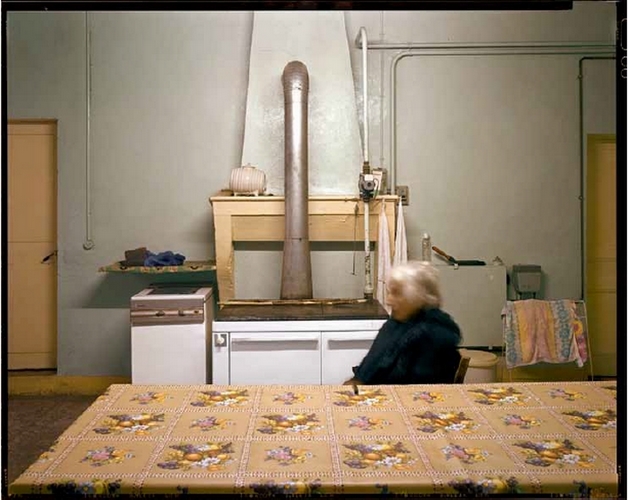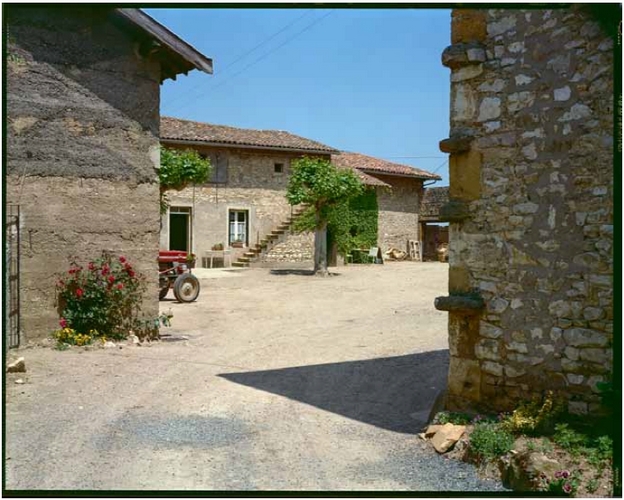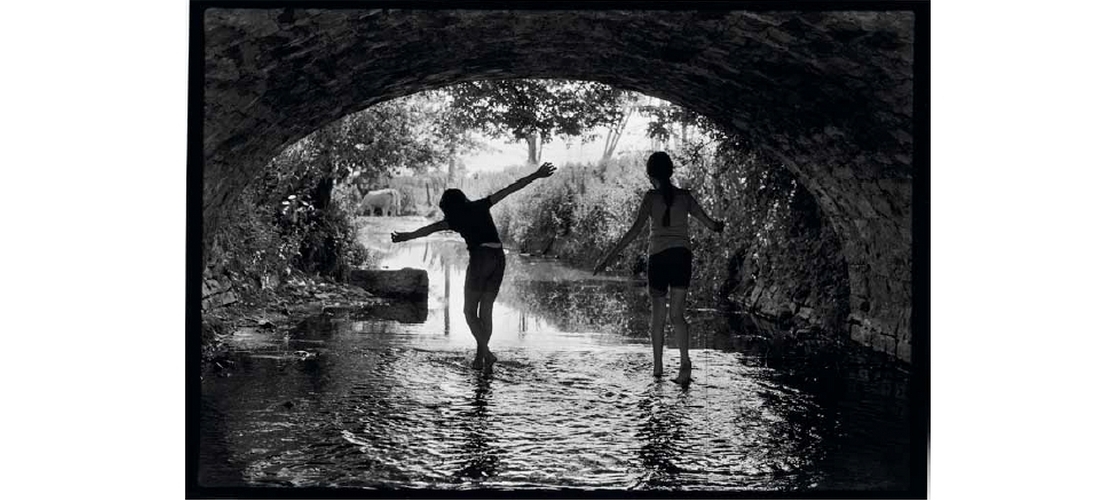
Villefranche-sur-Saône, in the series " La ferme du Garet " carried out as part of the Photographic Mission of the DATAR, 1984 - © Raymond Depardon / Magnum Photos.
When you are on the A6 motorway, two kilometers before the toll of Villefranche on the left down, just before the bridge and facing a big commercial area for a few seconds, you can see a group house surrounded by acacias . This is the old district of Garet. It is a place full as we see in France. Yesterday was the country, today is the outskirts of the city. And tomorrow?
In the book, La Ferme du Garet, published by Square in 1995 and reissued by Actes Sud in 2003, Raymond Depardon tells us about his childhood and awakening to photography. It makes a particularly moving tribute to his parents farmers in Villefranche-sur-Saône and rural life in the 1950s to 1970s.
In a lengthy autobiography, he reveals his early passion for photography and the first images he realizes teenager. It evokes the daily life of the farm and its inhabitants, and describes, through the history of the family farm, the slow evolution of the rural world and its environment over the following decades. Depardon left the farm at 16 to go to Paris and started his formidable man picture career.

Villefranche-sur-Saône, in the series " La ferme du Garet " carried out as part of the Photographic Mission of the DATAR, 1984 - © Raymond Depardon / Magnum Photos.
He punctuates his story with photographs he realizes during his brief visits to the farm, as he travels the world, and became an accomplished photojournalist. His brother John, father of 4 girls with his wife Lilette, who took over the operation.
In 1984, as part of the photographic mission of DATAR, Raymond Depardon returns to the farm of his childhood. He was then 48 years old. "I felt that I was losing a number of elements that would disappear from my memory," he says. This return to the roots expands photographic palette. Working in the room, color, aside any nostalgia and brings a new look at the landscape.

